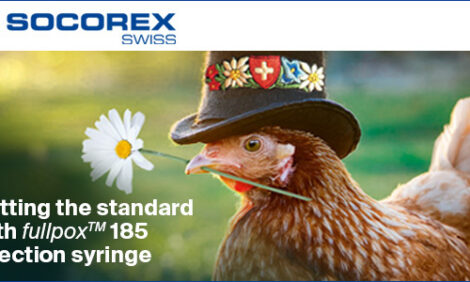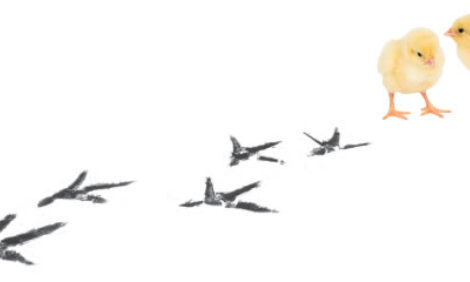



Farm Animal Welfare Issues Affect Poultry Producers
By G.T. Tabler, Poultry Science Department at the University of Arkansas's Avian Advice - Livestock production practices have evolved at a rapid pace over the past 30 years. So much so that few people today are aware of current on-farm management practices.Introduction
This fact is emphasized by evidence that many students enrolled in college animal science courses today are largely unaware of common practices associated with modern animal agriculture (Heleski, 2004). It can no longer be assumed that animal and poultry science students enter college with practical, on-farm experience. If these students are largely unaware of production practices, it’s a safe bet the general public knows practically nothing about animal agriculture and modern-day production practices.
Perhaps this should not be surprising given the fact that 98% of the U.S. population does not farm. Parents can no longer teach their kids livestock management practices because most parents are too far removed from the farm themselves. However, even though they may know little about livestock production, most of that 98% expects farm animals to be humanely treated. The following paragraphs offer information on welfare issues affecting the poultry industry and its producers.
Five Freedoms
The Farm Animal Welfare Council’s so-called five freedoms (FARC, 1992) provide a framework for assessing farm animal welfare. These freedoms include:
-
Freedom from hunger and thirst – by providing ready access to fresh water and a diet to maintain full health and vigor.
-
Freedom from discomfort – by providing an appropriate environment including shelter and a comfortable resting place.
-
Freedom from pain, injury or disease – by prevention or rapid diagnosis and treatment.
-
Freedom to express normal behavior – by providing sufficient space, proper facilities and company of the animal’s own kind.
-
Freedom from fear and distress – by ensuring conditions and treatment which avoid mental suffering.
Unfortunately, common husbandry practices which improve some aspects of animal welfare may diminish others (Anonymous, ND). For example, caging laying hens certainly restricts their freedom of movement but, every bird receives clean, fresh water and a nutritionally well balanced diet. In addition, raised cages also allow wastes to fall through, maintaining cleanliness for both birds and eggs. However, welfare questions still remain: e.g., just how important is it to a hen to build a nest or scratch for bugs in the barnyard (Anonymous, ND).
The poultry industry must constantly assess the situation and enhance animal welfare in a manner the public will accept. If production practices cannot pass the test of public acceptance, modern-day consumers have no problem changing their buying habits, leaving animal agriculture searching for answers. A good first step is a heightened awareness within the industry and among producers about animal welfare concerns and problems.
Production advantages associated with improved welfare need to be emphasized by researchers to the industry (Mench and Duncan, 1998). Good management will minimize most welfare problems. Therefore, researchers must communicate current knowledge to industry personnel and contract producers in areas such as improved production methods, changing rules and regulations, and animal welfare audits and facility inspections. Poultry producers are referred to an excellent article by Watkins (2003) concerning what to expect and how to prepare for an animal welfare audit at your farm.
Additional Efforts Needed
Practical methods for improving poultry welfare are already available, particularly in the areas of catching, handling and slaughter (Mench and Duncan, 1998). Today, however, economics drive everything and research is needed to provide information from the public on what they will accept (and pay for) before the poultry industry can justify making costly sweeping changes to current production practices. Despite potential for immediate improvement in some areas, Mench and Duncan (1998) listed a number of areas requiring additional efforts by the poultry industry. These include:
- Equipment design for new facilities
- Gas stunning methods that are effective and considered safe
- Less stressful methods to induce molting that ensure a complete molt
- Identification and breeding of stocks that do not require beak trimming
- Workable alternative production systems for laying hens
- Changing physiology and needs of broilers as a result of selection
- Mechanization of handling and loading of broilers
- Development of a use for spent hens; improved methods of on-farm disposal to ensure a humane death
- Identification of human factors responsible for welfare problems
- Broken bones in hens; causes, economic effects, methods to decrease breakage, including dietary modifications at end-of-lay
- Effect of journey times and crate densities on broiler welfare during transport
- Improved house design to facilitate handling and catching
- Welfare effects of practices like toe-trimming and the use of NozBonz to prevent broiler breeder males from using the female feeders
- Perch design for layers and broilers
- Quality of house environment in relation to seasonal environmental extremes
Establishing a common set of standards for animal welfare in the poultry industry is made more difficult because facilities, management, and personal opinions differ between various poultry producing regions of the country and even within regions. For all its similarities, the U.S. poultry industry is not as uniform as it may first appear.
Animal Care
Each state in the U.S. has laws prohibiting cruelty to animals although few relate to livestock production. On U.S. farms, there are presently no laws or regulations that require farm animal care assurances, and voluntary programs of farm animal care are not widely used (McGlone, 2002). However, an increasing number of very large and influential companies are developing and implementing animal welfare programs which will greatly affect how animals are produced on the farm in the future. Consumers of livestock products expect producers to treat animals humanely and with respect.
Retailers of farm livestock products know their markets depend on customers’ confidence that farm animals are treated humanely. As a result, more and more retailers are demanding that suppliers be able to document humane animal treatment. Suppliers in the beef, pork, and poultry industries must develop animal welfare programs that satisfy their retail clients if they expect to keep those clients. For contract poultry producers, this likely means some form of verifiable, on-farm inspection that documents proper welfare procedures.
McGlone (2002) has suggested training and certification programs for farm animal care are needed to satisfy 1) the public, 2) consumers, 3) food retailers and 4) the government. With regards to farm animals in a commercial farm setting, it was proposed such programs should contain the following features:
- Tailored to the individual farm
- Information about humane care including husbandry, handling, and use of information services to remain up-to-date
- In-service education and training
- Formal or on-the-job training opportunities
- Information about a broad range of areas including husbandry, behavior, nutrition, environmental physiology, veterinary clinical, diagnostic medicine, agricultural engineering, and instrumentation.
At its heart, animal welfare depends on the producer’s values and attitudes. It is an issue that has, for the most part, fallen under industry self regulation rather than government control. That could change, however, if the industry fails to address the issue head on and in a timely manner. Social pressure is driving the poultry industry to scrutinize its production practices. Customers, consumer groups, animal rights activists, and others are calling for action right now.
The industry has little choice but to develop animal welfare criteria that customers accept and that producers will have to incorporate, including on-farm inspections. Even though some may not favor such inspections, they are quickly becoming part of the cost of doing business today. Not all producers will agree that such a plan is necessary, but it is better to police ourselves now than to be policed later by the courts and the government for failing to act soon enough.
Animal welfare should not be looked upon by producers as being anti-livestock or anti-production agriculture. Rather, animal welfare should have the overall goal of maintaining the long-term sustainability of livestock production for current and future generations of producers.
Summary
Farm animal welfare is a major issue for the poultry industry and poultry producers. Even though few people outside agriculture understand current production practices, increasing numbers are demanding animal welfare assurances for the products they purchase. Major retailers, under pressure from customers, consumer groups, animal rights activists and others, are confronting the industry on issues involving cage space, withholding feed, forced molting, stocking densities, slaughter practices and catching, handling and transport of birds.
The industry must address these concerns or risk alienating clients and customers. One likely outcome that will affect poultry producers is the animal welfare audit system (including on-farm inspections). Producers should prepare for such inspections and take steps to document their management program.
This includes simple things like keeping mortality charts up to date on a daily basis and having a phone list of who to call if something goes wrong (feed system, well pump, generator, electrical power, fuel supplier, natural disaster, etc.). This may seem redundant and unnecessary now, but in the near future, this type information will likely have to be documented to comply with animal welfare guidelines.
References
Anonymous. No Date. Agriculture and animal care. Kansas State University. Available at: http://www.oznet.ksu.edu/NEAreaOffice/animalcare.htm. Accessed December 8, 2005.
Farm Animal Welfare Council (FARC). 1992. FARC updates the five freedoms. Vet. Rec. 131:357.
Heleski, C. R. 2004. Attitudes toward farm animal welfare. Ph.D. Dissertation. Michigan State University. East Lansing, MI.
McGlone, J. J. 2002. Symposia paper: Training and certification of farm animal care in teaching and research institutions. Prof. Anim. Sci. 18:7-12. March.
Mench, J. A., and I. J. H. Duncan. 1998. Poultry welfare in North America: Opportunities and challenges. Poult. Sci.77:1763-1765.
Watkins, S. 2003. Animal welfare audits: What to expect and how to be prepared. Avian Advice 5(4):6-8.
July 2006









